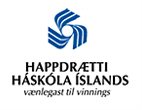Question
How did the Icelandic language start?
Asked By
Birna Sigurðardóttir
Answer

When Iceland was first settled in the 9th century, most of the settlers came from Norway, some of whom took slaves from Ireland en route. During the first centuries, the same language was spoken in Norway and Iceland, so there was little difference and the vocabulary was mostly Norse, with the exception of a few Celtic loan words. Up to the 13th century, the difference between the languages grew and accelerated in the 14th century. Changes appeared in the Icelandic sound system that were not seen in Norwegian and the Norwegian inflections became considerably simpler. There were changes throughout the centuries in both the Icelandic vowel and consonant systems. The vowel system changed in such a way that sounds merged (e.g. i and y, í and ý) and there were various changes to the consonant system. There have also been changes in inflections from the ancient language. Some are minor, others apply to whole declensions. Vocabulary has also increased steadily. After the uptake of Christianity in the 11th century, the Icelandic vocabulary increased significantly. New words were needed for religious concepts, some of which were taken from Greek or Latin, others from Germanic languages, though most were probably taken as loan words from other Scandinavian languages. For example one could mention kirkja, biskup, prestur, altari, engill, klaustur. The word synd is considered to be a loan word from old Saxon and guðspjall from ancient times. Various words related to court life and knights, came into the language through the medium of tales of knights translated from the French. Examples of this is the noun kurteisi and the adjective kurteis. Icelanders also had commercial connections with Hanseatic merchants in North Germany, particularly in the latter half of the 15th century, which brought many words of low German origin into the language that related to trade and commerce. At the reformation, many new words were added to the Icelandic vocabulary as the Bible and other church literature was translated into Icelandic. These translations brought a great number of loan words from Danish and German. English influence on Icelandic began significantly during the occupation in the 2nd World War when many Icelanders had daily communications with British and then later, American soldiers. One more factor in the development of Icelandic vocabulary needs to be mentioned and that is the practice of coining words. We now use the words þyrla, þota, gámur, sími, sjónvarp, tölva for the foreign words helicopter, jet, container, telephone, television, computer, to give but a few examples. The factors given above are just examples of the influences that have affected the development of Icelandic from the days of the Settlement. Changes in the sound and inflection systems throughout the centuries and additions to vocabulary have made their mark on Icelandic and have made it a distinct language. Translated by Paul Richardson. Further answers in English:
- Are portmanteau words frequent in Icelandic? by Guðrún Kvaran
- Is Icelandic the oldest language in Europe? How old is it? by Jón Axel Harðarson
- What is the origin of the Icelandic language? by Guðrún Kvaran
- Are there rules that say when words in Icelandic should be masculine, feminine and neuter? For a foreigner it is not enough to add an article. by Guðrún Kvaran
- Why do male last names in Icelandic end with -son instead of -sonur? by Guðrún Kvaran
- What is the shortest sentence in Icelandic to contain all the letters of the Icelandic alphabet? by Guðrún Kvaran
- How many words are there in Icelandic? by Guðrún Kvaran
- How many words are there in Icelandic for the devil? by Guðrún Kvaran
Um þessa spurningu
Dagsetning
Published 5.3.2005
Category:
Keywords
Citation
Guðrún Kvaran. „How did the Icelandic language start?“. The Icelandic Web of Science 5.3.2005. http://why.is/svar.php?id=4796. (Skoðað 17.1.2026).
Author
Guðrún Kvaranprofessor



